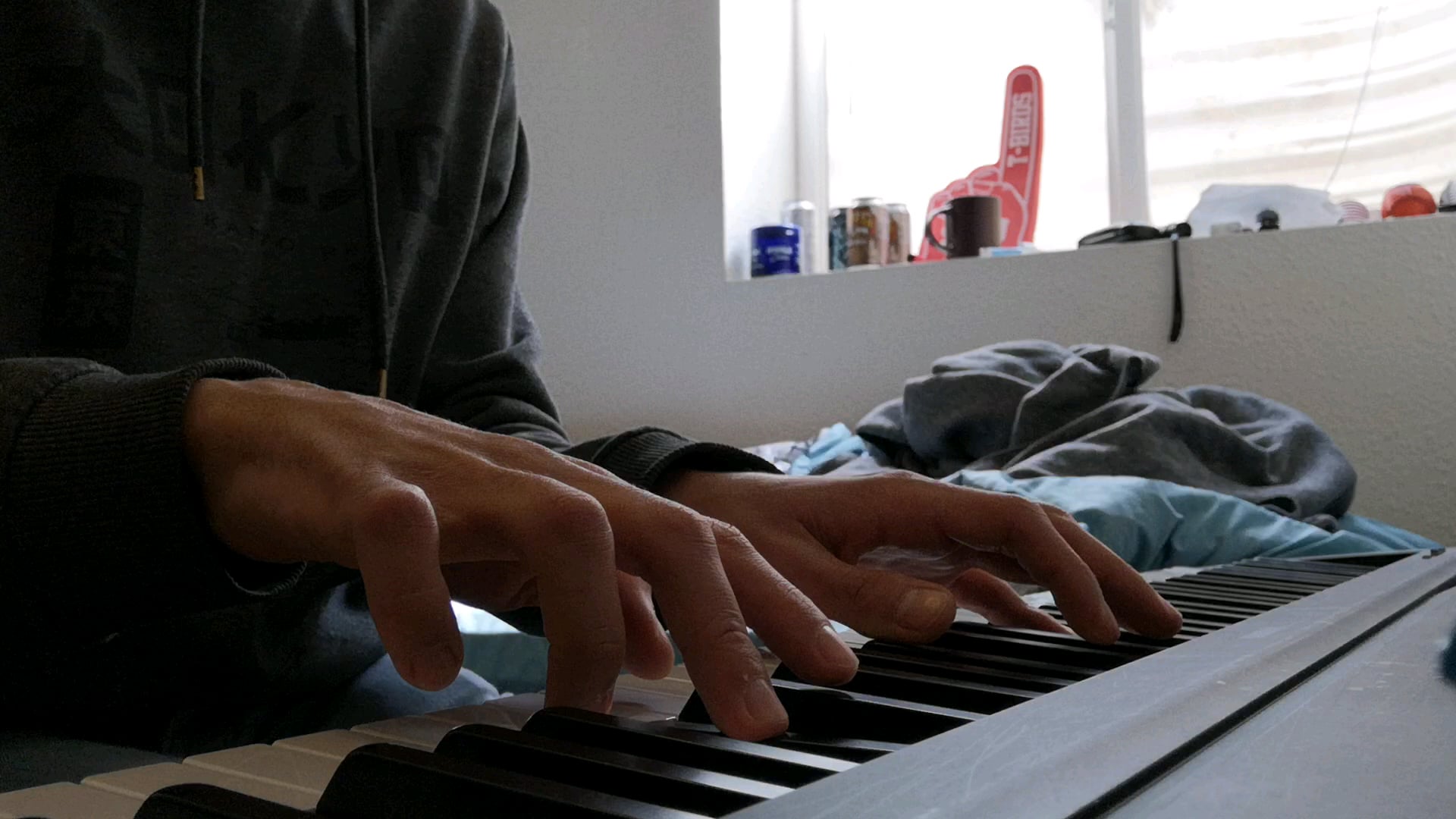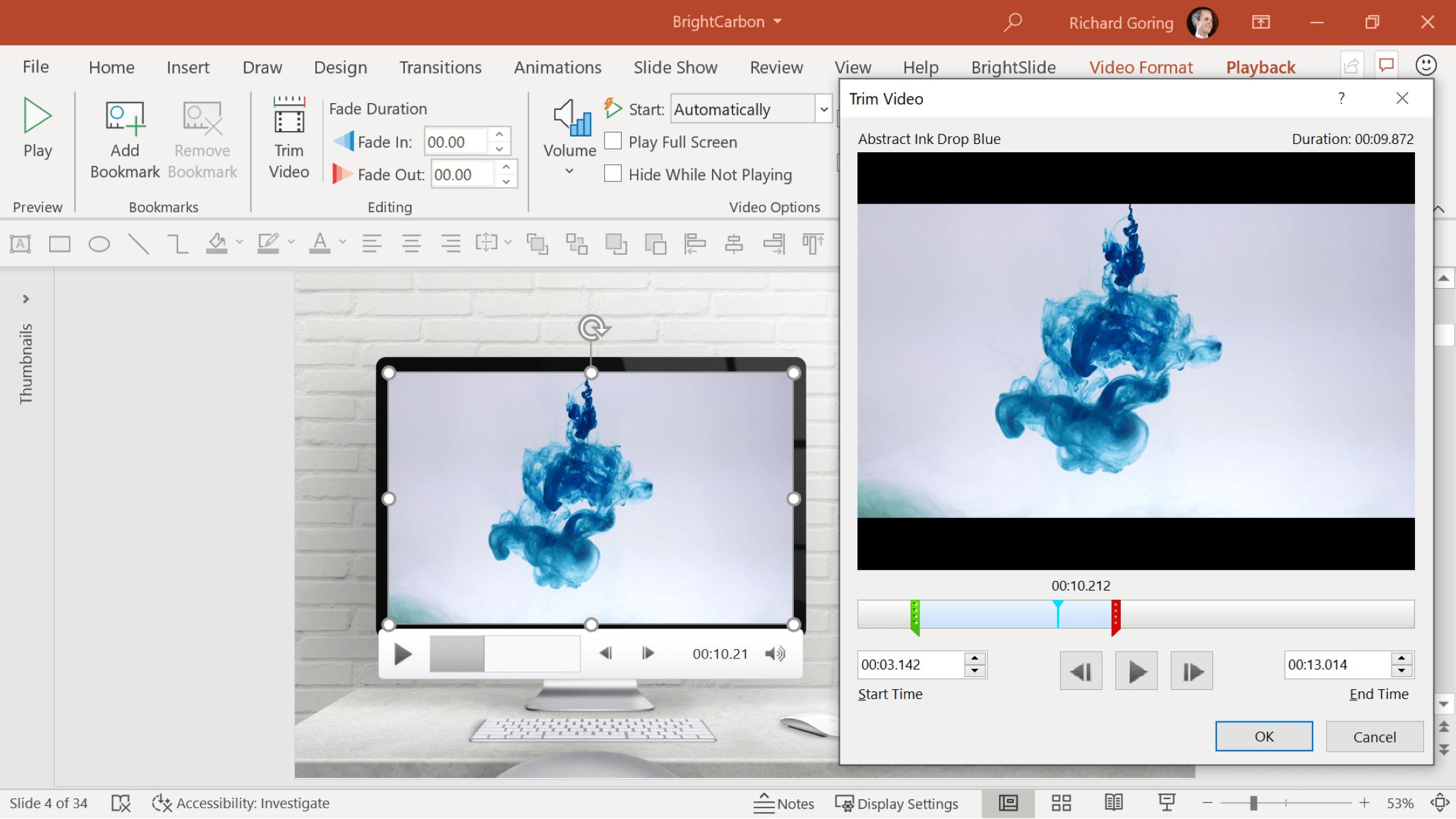Home>Production & Technology>Background Music>How To Play Background Music On Piano


Background Music
How To Play Background Music On Piano
Modified: February 9, 2024
Learn how to play background music on the piano with our easy step-by-step guide. Discover techniques and tips to create beautiful melodies.
(Many of the links in this article redirect to a specific reviewed product. Your purchase of these products through affiliate links helps to generate commission for AudioLover.com, at no extra cost. Learn more)
Table of Contents
Introduction
Background music can greatly enhance the ambiance and atmosphere of various settings, whether it’s a restaurant, a retail store, a hotel lobby, or even in the comfort of your own home. It adds a touch of elegance, relaxation, or excitement to any space. And one of the best ways to bring background music to life is by playing it on the piano.
Playing background music on the piano not only creates a beautiful sound, but it also allows you to showcase your musical talent and creativity. Whether you’re a beginner or an experienced pianist, this article will guide you through the process of playing background music on the piano, from choosing the right piece to incorporating techniques that will add depth and emotion to your performance.
Before we dive into the details, it’s important to understand that background music is meant to enhance the overall environment rather than steal the spotlight. It should be soothing, unobtrusive, and set the mood without overpowering the conversation or the ambiance of the space.
Now, let’s explore the world of background music on the piano and discover the techniques that will help you create a captivating musical experience.
Choosing a Suitable Piece
When selecting a piece to play as background music on the piano, it’s crucial to consider the genre, tempo, and overall mood of the piece. The music should align with the atmosphere and purpose of the space where it will be played. Here are some factors to consider when choosing a suitable piece:
- Genre: Different genres evoke different emotions and atmospheres. Classical music is often a popular choice for elegant and sophisticated settings, while jazz or blues may be more fitting for a relaxed and casual ambiance. Consider the theme and style of the space and choose a genre that complements it.
- Tempo: The tempo or speed of the piece is important in maintaining a consistent flow of background music. Slow tempos can create a calming and peaceful atmosphere, while faster tempos can add energy and a sense of liveliness. Find a tempo that suits the purpose of the space and the mood you want to create.
- Mood: The mood of the piece should align with the desired ambiance of the space. If you’re playing background music in a romantic setting, a piece with a tender and lyrical melody would be appropriate. On the other hand, if the space is lively and energetic, opt for a piece with a more upbeat and rhythmic feel.
- Length: Consider the duration of the piece as well. Background music is meant to be played continuously for an extended period of time without drawing too much attention. Choose a piece that is long enough to provide a continuous musical backdrop without being too repetitive.
- Level of difficulty: Assess your own piano skills and choose a piece that matches your proficiency. It’s important to be able to play the piece comfortably and confidently, without making mistakes or struggling with complex techniques. Remember, the focus should be on creating a pleasant atmosphere, not on showcasing difficult piano skills.
Take your time to explore different pieces and listen to recordings or performances to get a sense of their suitability as background music. Trust your instincts and choose a piece that resonates with you and fits the overall ambiance of the space.
Setting Up Your Piano
Before you start playing background music on your piano, it’s important to ensure that your instrument is properly set up. Here are some steps to follow:
- Tuning: Make sure your piano is in tune. A well-tuned piano will produce a harmonious and pleasing sound. If you’re not confident in tuning your piano yourself, it’s best to consult a professional piano tuner.
- Positioning: Choose a suitable location for your piano. Ideally, it should be placed in a room where it can be heard clearly but without overpowering the space. Avoid positioning it near windows or doors where temperature and humidity fluctuations can affect its tuning.
- Lighting: Ensure that the lighting around your piano is adequate. You should be able to see the sheet music clearly without straining your eyes. Adjust the angle and intensity of the lighting to reduce any glare or shadows on the keys and music stand.
- Seating: Use a comfortable and supportive piano bench or chair. Proper posture and positioning are essential for playing the piano with ease and reducing physical strain. Sit at a height where your arms can comfortably reach the keys and your feet can rest flat on the floor.
- Cleanliness: Keep your piano clean and dust-free. Regularly wipe the keys, music stand, and other surfaces with a soft cloth to remove any dust or debris. This will not only ensure a clean appearance but also prevent any buildup that may affect the sound quality.
- Maintenance: Schedule regular maintenance for your piano, including professional cleaning, regulation, and voicing. This will help keep your instrument in optimal condition and ensure that it produces the best sound possible.
By following these steps, you’ll create an environment where your piano is in its best condition and ready to deliver a beautiful sound as you play background music. Now that your piano is set up, let’s explore the techniques for playing background music on the piano.
Understanding the Basics of Background Music
Background music serves as a subtle and complementary element in various settings. To create the right ambiance, it’s important to understand the basics of playing background music on the piano.
Firstly, background music should be played at a lower volume compared to a concert or performance setting. The purpose is to create a soothing and unobtrusive atmosphere that enhances the space without distracting from other activities or conversations.
Secondly, background music should have a steady and consistent tempo. This helps maintain a seamless flow and prevents abrupt changes that may disrupt the overall ambiance. Aim for a tempo that is moderate and easy to follow.
Additionally, background music typically features a simpler and more repetitive structure. This allows the music to fade into the background while still providing a pleasant backdrop to the environment. Consider choosing pieces with a minimalistic and repetitive melodic pattern.
Dynamics also play a crucial role in background music. The volume variations should be subtle and smooth, without sudden or drastic changes. Gradual swells and fades add depth and emotion without overpowering the space.
Lastly, it’s important to maintain a consistent and steady rhythm while playing background music. This helps establish a comfortable and predictable groove that blends seamlessly with the environment. Avoid intricate or complex rhythmic patterns that may draw too much attention.
By understanding these basics, you can create a musical backdrop that perfectly complements the space and enhances the overall atmosphere. Now, let’s move on to the techniques for practicing background music on the piano.
Practicing Techniques for Background Music
Practicing specific techniques will help you develop the skills necessary for playing background music on the piano. Here are some techniques to focus on:
- Controlled touch: When playing background music, it is important to have a controlled touch on the keys. Practice playing with a light touch, allowing the notes to resonate fully without producing an overly loud or harsh sound.
- Sustained playing: Background music often requires sustained playing, where you hold notes or chords for longer durations. Work on your finger stamina and practice sustaining notes evenly, maintaining consistent volume throughout.
- Smooth transitions: Smooth transitions between notes and chords are essential in creating a seamless flow of background music. Practice transitioning between different chords and notes without interruptions or hesitations, working on maintaining a smooth and legato sound.
- Consistent tempo: Background music should have a consistent and steady tempo. Practice using a metronome to develop a strong sense of timing and rhythm. Start with slower tempos and gradually increase the speed as you become more comfortable.
- Simplifying complex pieces: If you choose to play a more complex piece as background music, consider simplifying certain sections to maintain a smooth and relaxed atmosphere. Modify the arrangement by reducing the number of chords or notes and focusing on the core melody.
- Playing with dynamics: Experiment with different levels of volume and dynamics to add depth and emotion to your background music. Practice playing gradual fades and swells, ensuring a smooth transition between different dynamic levels.
Remember to practice these techniques regularly to enhance your skills and ability to play background music effectively. As you become more comfortable with these techniques, you will be able to create a captivating musical experience that enhances any space.
Adding Emotion and Dynamics
While background music is meant to be unobtrusive, it should still evoke emotion and create a captivating atmosphere. Adding emotion and dynamics to your playing will help enhance the musical experience. Here are some techniques to achieve this:
- Expressive phrasing: Pay attention to the phrasing of the music and use expressive techniques to bring out the emotional nuances. Focus on highlighting the melody and using subtle variations in dynamics to create a sense of tension and release.
- Varying dynamics: Dynamics play a crucial role in conveying emotion. Experiment with different levels of volume, from soft and delicate passages to slightly louder sections for added intensity or drama. Gradually increase and decrease the volume to create a dynamic and engaging musical backdrop.
- Adding subtle ornamentation: Incorporating subtle ornamentation, such as trills or grace notes, can add elegance and depth to your playing. Be mindful not to overdo it and keep the ornamentation understated, ensuring that it enhances the music without distracting from the overall ambiance.
- Playing with nuance: Explore the use of different articulations, such as staccato or legato, to add nuance and expressiveness to your playing. Pay attention to the subtle details and vary your touch on the keys to create a rich and captivating performance.
- Emotional interpretation: Connect with the emotional context of the piece and experiment with different interpretations. Consider the mood you want to convey and explore ways to evoke specific feelings, whether it’s tranquility, nostalgia, or joy.
Remember, the key is to maintain a balance between adding emotion and maintaining a background music role. The goal is to create a subtle and immersive experience that enhances the ambiance without overpowering it. Practice these techniques to develop your ability to add emotion and dynamics to your background music performances.
Using Chords and Harmony
Chords and harmony play a vital role in creating a rich and harmonious background music experience on the piano. By understanding and utilizing different chord progressions and harmonies, you can enhance the depth and texture of your playing. Here are some techniques to consider:
- Basic triads: Start by mastering basic triads – major, minor, and diminished chords. These three-note chords form the foundation of harmony and provide a solid base for your background music. Practice playing them in different inversions and explore their various voicings.
- Extended chords: Once you’re comfortable with triads, expand your repertoire by incorporating extended chords like seventh, ninth, and eleventh chords. These chords add complexity and color to your playing, helping to create a more sophisticated and expressive background music experience.
- Chord progressions: Experiment with different chord progressions to create variety and interest in your playing. Explore common progressions like I-IV-V or ii-V-I and experiment with variations or substitutions to add your own unique touch. The choice of chord progressions can greatly influence the mood and atmosphere of the background music.
- Varying rhythm: Use different rhythmic patterns when playing chords to add texture and interest. Experiment with arpeggios, broken chords, or rhythmic sequences. Keep in mind that the rhythm should still remain subtle and supportive of the overall background ambiance.
- Modulation: Consider incorporating modulation into your playing to add freshness and variety. Modulation is the act of transitioning to a different key within a piece. It can bring a change in energy and mood, keeping the listener engaged and adding complexity to the background music.
- Transposing: Transposing a piece to a different key can also create a refreshing experience. It allows you to explore different tonalities and adapt the piece to better fit the desired ambiance. Experiment with transposing to find the most suitable key for the background music.
By mastering chords and harmony, you can create a captivating and harmonically-rich background music experience on the piano. Practice these techniques and experiment with different chord progressions and voicings to enhance the depth and texture of your playing.
Incorporating Melodic Lines
While background music typically focuses on creating a pleasant atmosphere, incorporating melodic lines can add a touch of elegance and musicality to your piano playing. By carefully weaving melodic lines into your background music, you can create a more captivating and engaging experience. Here are some techniques to consider:
- Selecting a prominent melody: Choose a piece or section of a piece with a discernible and memorable melody. This melody should be easy to recognize and follow, even when played subtly in the background.
- Keeping the melody simple: When playing a melody as background music, it’s important to keep it simple and easy to follow. Avoid complex arrangements or embellishments that may distract from the overall ambiance. Focus on the core melody and play it in a straightforward and uncluttered manner.
- Exploring different octaves: Experiment with playing the melody in different octaves to create variety and depth. Play with higher or lower registers of the piano to give the melody a different character and timbre.
- Interweaving with chords: Blend the melodic lines with the chords and harmony to create a cohesive musical arrangement. Harmonize the melody by selecting chords that complement the notes of the melody. This helps create a sense of unity and musicality.
- Gradual development: Develop the melodic lines gradually throughout the piece to maintain interest and engagement. Start with simple and straightforward motifs, and as the background music progresses, add variations and embellishments to keep the listener captivated.
- Dynamic shaping: Pay attention to the dynamics of the melodic lines. Add subtle variations in volume and expression to convey emotion and depth. Employ techniques like crescendos, diminuendos, and accentuations to breathe life into the melody.
By incorporating melodic lines into your background music, you can elevate the musical experience and create a more dynamic and captivating ambiance. Practice these techniques and experiment with different melodies to find the perfect balance between a subtle background and an engaging musical performance.
Blending with Other Instruments
While playing background music on the piano can create a beautiful and immersive experience, blending with other instruments can add a new dimension and depth to the overall sound. Here are some techniques for blending the piano with other instruments:
- Ensemble playing: If you have the opportunity, collaborate with other instrumentalists or musicians to create a small ensemble. Whether it’s a string quartet, a jazz band, or a duet with a vocalist, combining the piano with other instruments can create a rich and varied musical texture.
- Understanding the roles: When blending with other instruments, it’s essential to understand the roles each instrument plays. The piano can provide the harmonic foundation, while other instruments can take up the melody or provide rhythmic accompaniment. Pay attention to dynamics and balance to ensure each instrument complements the others harmoniously.
- Listening and adjusting: As you play alongside other instruments, actively listen and adjust your playing to create a cohesive and balanced sound. Be responsive to the dynamics, articulation, and style of the other instruments, and adjust your volume and phrasing accordingly.
- Layering and counterpoint: Experiment with layering different musical elements and creating counterpoint between the piano and the other instruments. This involves playing different melodies or harmonies that intertwine and create a rich interplay of musical lines.
- Sharing the spotlight: While it’s important to blend with other instruments, there will be moments when the piano takes center stage. Be mindful of these moments and embrace them with confidence and expressive playing. At the same time, be aware of when to step back and let other instruments shine.
- Rehearsing and practicing together: If possible, rehearse and practice with the other musicians to establish a cohesive sound and feel. This will allow you to adjust and synchronize your playing, ensuring a seamless blending of the piano with the other instruments.
Blending the piano with other instruments adds a new level of depth and complexity to your background music. Whether playing in a small ensemble or collaborating with other musicians, these techniques will help create a harmonious and captivating musical experience.
Conclusion
Playing background music on the piano is a beautiful and rewarding experience. It allows you to create a captivating ambiance, enhance the atmosphere of a space, and showcase your musical talent. By following the techniques and guidelines mentioned in this article, you can master the art of playing background music on the piano.
Remember to choose a suitable piece that aligns with the genre, tempo, and mood of the space. Set up your piano properly, ensuring that it is in tune and positioned in an optimal location. Understand the basics of background music, focusing on controlled touch, consistent tempo, and unobtrusive dynamics.
Practice techniques such as incorporating melodic lines, adding emotion and dynamics, using chords and harmony, and blending with other instruments. These techniques will help you create a seamless and captivating musical experience that enhances any environment.
Whether you are playing in a restaurant, a hotel lobby, a retail store, or even in the comfort of your own home, background music on the piano has the power to transform the atmosphere and touch the hearts of those who listen. So, explore different sounds, experiment with various techniques, and let your creativity shine through as you bring beautiful background music to life on the piano.
Now, it’s time to let your fingers dance across the keys and create the perfect background music that will leave a lasting impression on your listeners.











